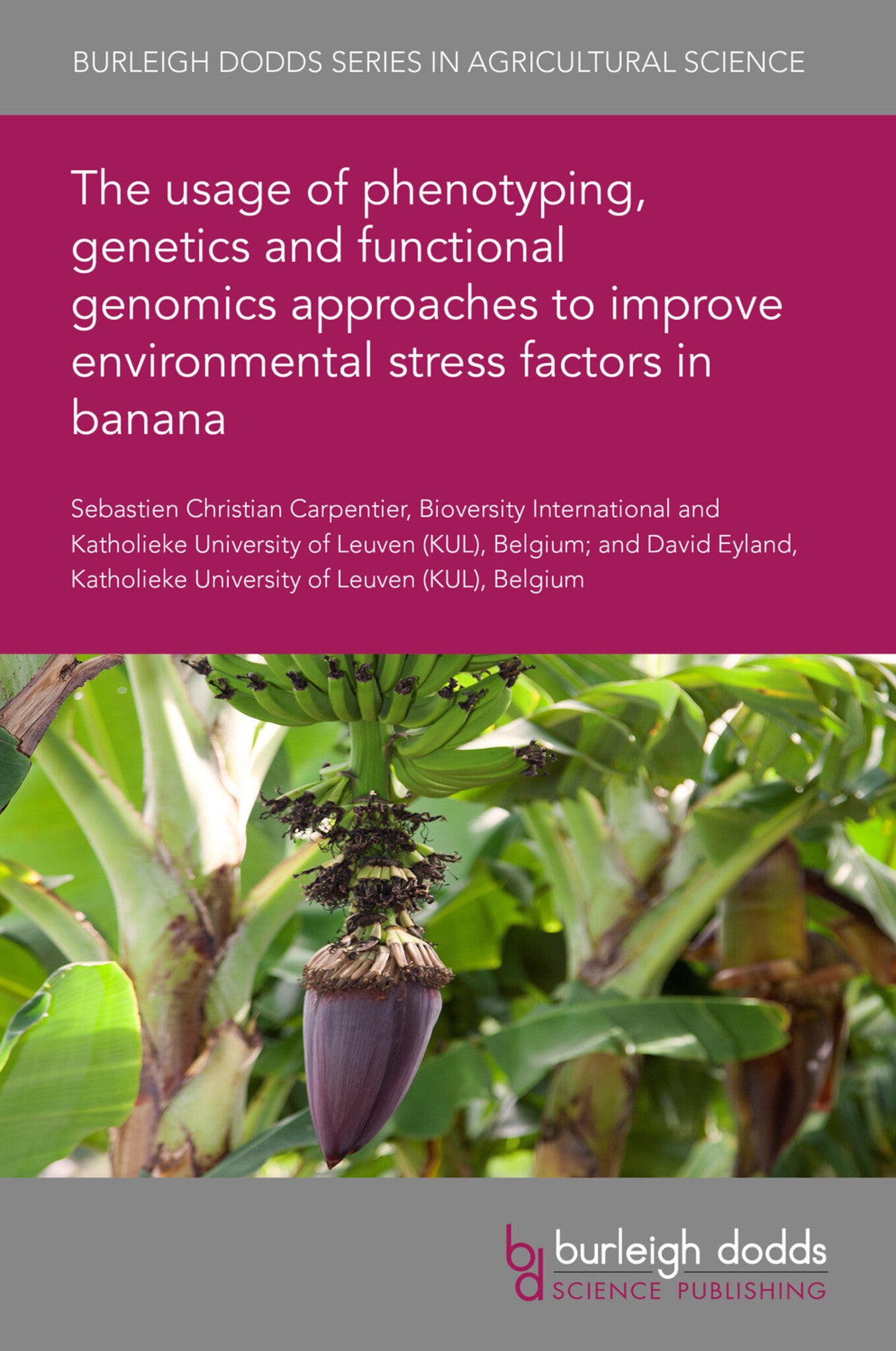We're sorry. An error has occurred
Please cancel or retry.
The usage of phenotyping, genetics and functional genomics approaches to improve environmental stress factors in banana
Regular price
£25.00
Sale price
£25.00
Regular price
£25.00
Unit price
/
per
Sale
Sold out
Re-stocking soon
Modelling predicts that temperature and precipitation are the abiotic factors that have the biggest impact on banana production. It is clear that banana needs tropical temperatures and that it resp...
Read More

Some error occured while loading the Quick View. Please close the Quick View and try reloading the page.
Couldn't load pickup availability
- Format:
-
23 November 2020

Modelling predicts that temperature and precipitation are the abiotic factors that have the biggest impact on banana production. It is clear that banana needs tropical temperatures and that it responds very early to a reduced soil water content. The stomata of banana plants also respond very sensitively to an increased Vapour Pressure Deficit even when the soil water potential is non-limiting. This sensitivity causes considerable yield losses. This chapter discusses banana physiology in relation to its agro-ecological environment and the phenotyping of traits such as sub-optimal temperature tolerance and water deficit tolerance. A workflow where the biodiversity is phenotyped in a high throughput fashion in a controlled environment and linked to molecular analysis is presented. Once interesting traits are identified, strategies are required to identify potential genetic markers that are correlated to these traits. Methods to identify the genetics behind these traits, such as genome-wide association study (GWAS), associative transcriptomics and proteomics are briefly discussed. The identification of correlations between phenotype and genetic markers will speed up future banana breeding.

Price: £25.00
Publisher: Burleigh Dodds Science Publishing
Imprint: Burleigh Dodds Science Publishing
Series: Burleigh Dodds Series in Agricultural Science
Publication Date:
23 November 2020
ISBN: 9781786769503
Format: eBook
BISACs:
SCIENCE / Life Sciences / Horticulture, Commercial horticulture, TECHNOLOGY & ENGINEERING / Agriculture / Sustainable Agriculture, Botany and plant sciences, Sustainable agriculture, Agronomy and crop production

1 Introduction 2 Crop physiology and phenotyping 3 Biotechnology to assist breeding 4 Conclusions 5 Where to look for further information 6 Acknowledgements 7 References



